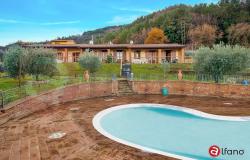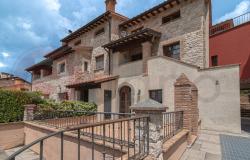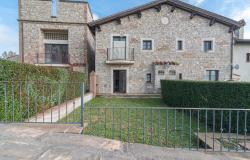An analysis of the Perugia province market shows healthy activity at the top end and a greater interest for the southern areas of Medio Tevere, Assisi and Spoleto
The geography of property demand in Umbria is changing as a result of the worldwide economic turmoil.
This unusual finding emerged at a property conference held jointly in Perugia by the local Confcommercio trade association and FIMAA, an association of Italian estate agents. Using data from the Agenzia del Territorio—Italy’s equivalent of the Land Registry—the conference speakers explained that, after eight years of boom, the Umbrian market is readjusting.
Demand in the Perugia province continued to flourish throughout 2007, even though some other areas of Italy had already started to feel the impact of the international economic wobbles. In the first half of 2008, however, sales volumes slowed down, dropping by 19.91% and going back to 2004 levels.
This decrease was not uniform. Perugia and its immediate surroundings were hit more than the rest of the province, losing a small part of their residential demand to the Medio Tevere, Assisi and Spoleto areas. In particular, the Medio Tevere village of Collazzone spectacularly bucked the trend with a 27.67% increase in sales, seeing the fourth consecutive year of growth in residents’ numbers and prompting local mayor Alberto Borioli to tell local website IlTamTam (www.iltamtam.it) that “low rates of local taxation, good services and quality of life, a strong growth of the local economy, together with reasonable property prices, are the ingredients that allowed us to reach these goals.”
But even Perugia’s cooldown is hardly the harbinger of a market collapse in the area. “Umbria is fundamentally bearing up when it comes to prices—a sign of the solidity and robustness of the local market, which doesn’t show any significant symptoms of sinking,” says FIMAA-CAIP president Bruno Biagiotti.
Both FIMAA and Confcommercio pointed out that houses are still seen as a sound investment throughout Umbria. Some 84% of the region’s residents are property owners and a staggering 46% are interested in upgrading their home.
It follows that, much like in the rest of Italy, low standard homes in urban outskirts are the worst-affected by the contraction in demand, but buyers are still on the market for better quality houses. “The slowdown has affected medium to low quality housing, whereas there is a strong push towards high quality property,” says FIMAA-CAIP president Bruno Biagiotti.
Because Umbrian purchasers have become pickier, FIMAA and Italian property developers’ association ANCE are launching a quality certification for regional properties “to distinguish the different products on the market, both new and resale.”
To obtain the CIQ— Certificazione Immobiliare di Qualità—houses will be subject to an independent assessment of their building and project standards.












